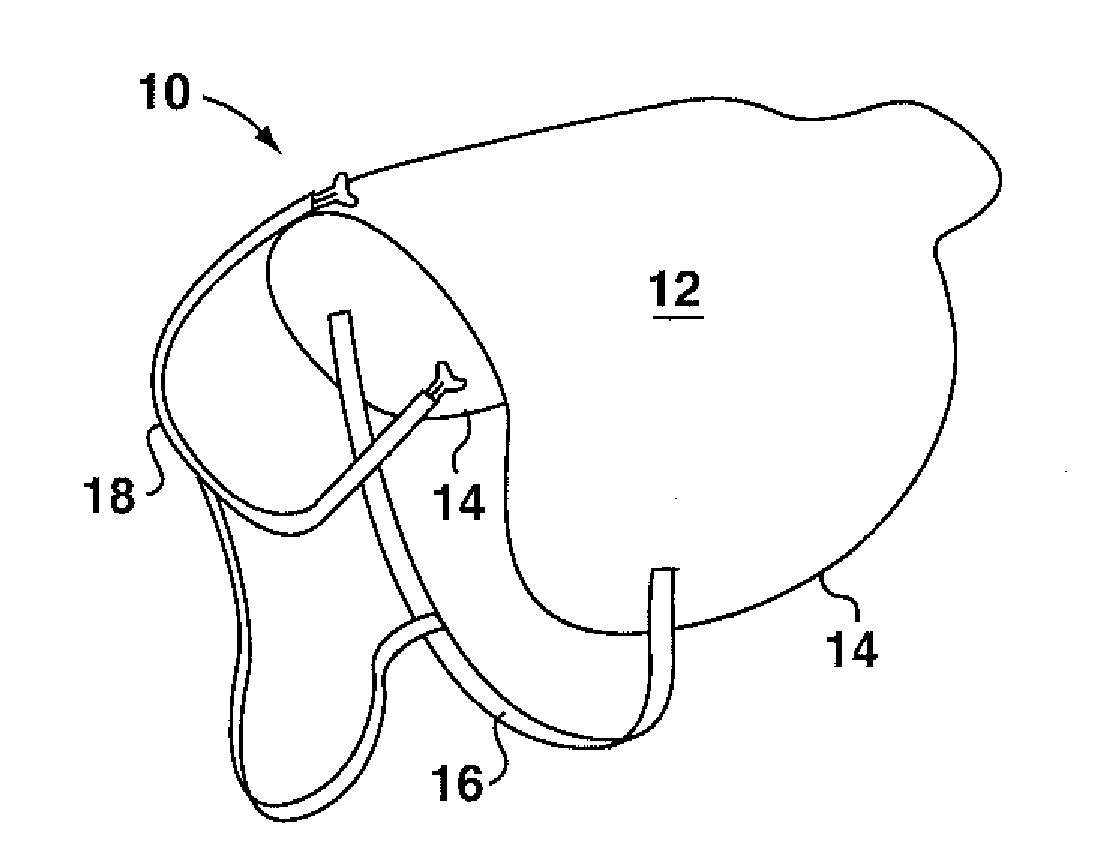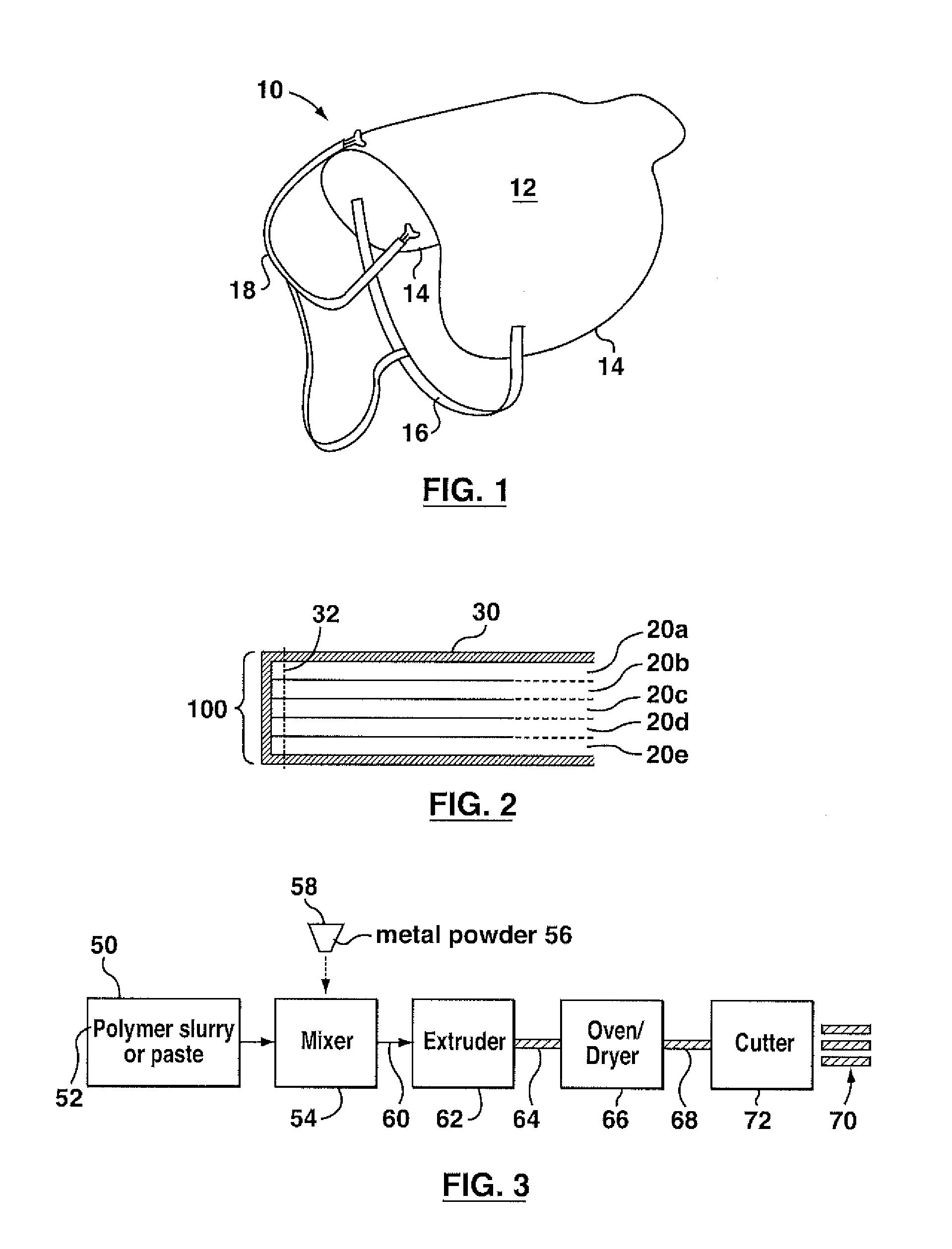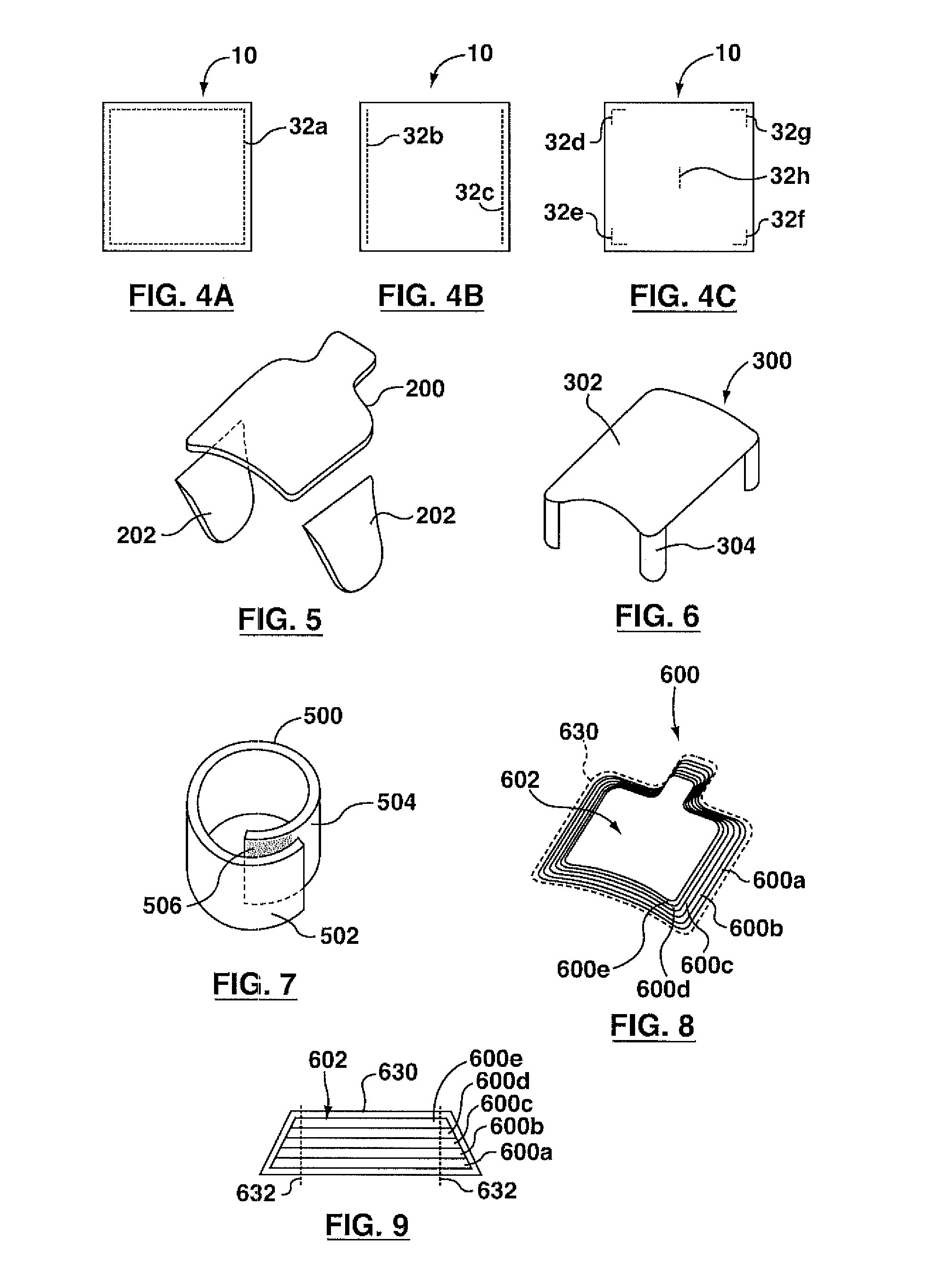Exercise weight for horses and other users
a technology for exercising weights and users, applied in the field of unique exercise weights, can solve the problems of increasing the workload on the horse during the exercise, requiring considerable individual skilled labor, and being costly, and achieves the effects of improving aerobic ability, reducing workload, and improving adaptability and conformity
- Summary
- Abstract
- Description
- Claims
- Application Information
AI Technical Summary
Benefits of technology
Problems solved by technology
Method used
Image
Examples
Embodiment Construction
[0023]Reference is first made to FIG. 1, which shows a typical horse exercise weight 10 according to the invention, made in the form of a saddle. The exercise weight 10 may have a central section 12 which lies across the back of the horse, downwardly extending side sections 14 to which lie against the flanks of the horse, and may have a cinch strap 16 attached to central section 16, and a martingale strap 18 attached as shown, to secure the exercise weight 10 to the horse. The particular form selected for the external shape of the weight 10 and the straps may vary depending on the application, and other external shapes may also be used.
[0024]In the past, a typical implementation of the weight 10 would have been to use a fabric or similar material which would lie against the horse and which had pockets to hold the desired weights. That construction has several disadvantages, including a high degree of resistance to elastic shape deformation (a high YME) at the location of the weights...
PUM
 Login to View More
Login to View More Abstract
Description
Claims
Application Information
 Login to View More
Login to View More - R&D
- Intellectual Property
- Life Sciences
- Materials
- Tech Scout
- Unparalleled Data Quality
- Higher Quality Content
- 60% Fewer Hallucinations
Browse by: Latest US Patents, China's latest patents, Technical Efficacy Thesaurus, Application Domain, Technology Topic, Popular Technical Reports.
© 2025 PatSnap. All rights reserved.Legal|Privacy policy|Modern Slavery Act Transparency Statement|Sitemap|About US| Contact US: help@patsnap.com



